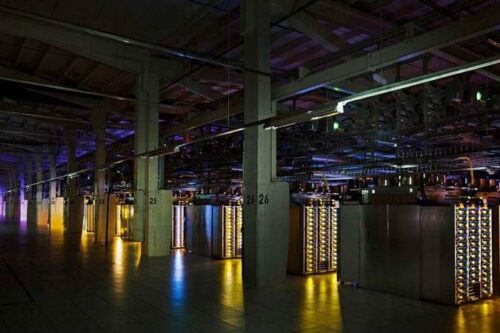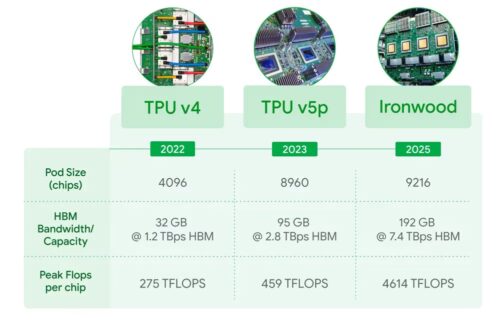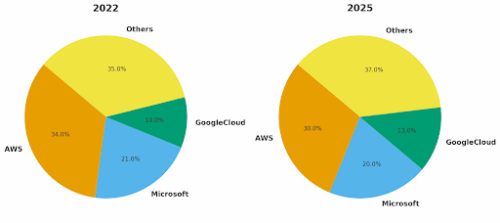

The sharpest threat to Google’s search business is now running on Google’s own servers. In May 2025, OpenAI announced that ChatGPT and its application programming interface (API) would operate on Google Cloud across the United States, Japan, the Netherlands, Norway and the United Kingdom. The deal gives OpenAI access to Google’s infrastructure and tensor processing units (TPUs) at a moment when demand for computing power is overwhelming any single provider. For Google, the partnership brings a major win for its cloud business, but also heightens the risk to its most profitable revenue stream in search advertising.
That reliance on Google reflects the scale of OpenAI’s financial commitments. In March 2025, the company closed the largest private tech funding round on record, raising $40 billion at a $300 billion valuation. The round was led by $30 billion from SoftBank and $10 billion from a syndicate of investors including Microsoft, with about $18 billion directed toward Project Stargate, a $500 billion program to expand AI infrastructure. The $40 billion round highlighted OpenAI’s dependence on external funding and the shortcomings of its capped-profit structure introduced in 2019. That model, designed to balance investment with a public mission, limited returns and constrained fundraising as costs accelerated. In 2025, OpenAI announced a transition to a public benefit corporation (PBC), removing profit caps while requiring a public purpose, a change intended to make large-scale fundraising more viable.

Figure 1: Trump announced an investment in artificial intelligence (AI) infrastructure.
The backdrop is OpenAI’s long dependence on Microsoft. After investing $1 billion in 2019, $2 billion in 2021 and $10 billion in 2023, Microsoft secured exclusivity for OpenAI’s models on Azure. Tensions soon emerged over revenue, clauses tied to artificial general intelligence (AGI) and the turmoil surrounding Sam Altman’s brief ouster in 2023. Mustafa Suleyman, the co-founder and former head of applied AI at DeepMind (acquired by Google), became CEO of Microsoft AI, and his recruitment to lead internal AI development further strained the relationship between Microsoft and Google. OpenAI responded with a multi-cloud strategy, committing $12 billion to CoreWeave, joining SoftBank and Oracle in Project Stargate and working with Broadcom on custom chips. By 2025, exclusivity had ended, though Microsoft remains OpenAI’s largest investor with about $14 billion committed.
For Google, winning OpenAI strengthened Google Cloud, which reported $13.6 billion in Q2 2025 revenue, up from $10.3 billion a year earlier. Google CEO Sundar Pichai was publicly “very excited” about the partnership, downplaying the threat. Yet by powering ChatGPT, Google risks accelerating pressure on its own search business, a gamble some analysts compare to Yahoo’s reliance on Google two decades ago.
Founded in 2008, the Google Cloud platform has evolved from foundational storage into a prolific AI hyperscaler, powering the largest generative AI workloads. Put simply, Google’s cloud network is the factories in an industrial district, all connected by the internet’s roads and highways. It’s an intricate service layer that runs on top of the internet powered by thousands of data-center racks, knitted together by the fabric of Google’s proprietary Jupiter DC network, linking thousands of processing units to scale workloads linearly as one AI hypercomputer. The largest cloud infrastructure hyperscalers (Amazon Web Services, Google Cloud, Microsoft Azure, etc.) operate thousands of these data-center facilities internationally, and rent out the compute power, storage, software, and machine learning capabilities to consumers and enterprises alike to power anything, from your 8th rewatch of Suits on Netflix to servicing billions of queries on ChatGPT.

Figure 2: Data centers powering Google’s AI transformation
Each data-center comprises 4 core components: Power distribution, a network switching mechanism to connect servers with the broader data center network, cooling infrastructure, and the server hardware which lies at the heart of all operations and is unique to each provider. Google’s culture of innovation over acquisition, building rather than buying, produced its 7th generation Tensor Processing Unit (TPU), uniquely positioning them to rapidly capture market share in an industry limited only by supply, shown by a $106 billion backlog in demand for existing cloud services.
Codenamed “Ironwood”, the Google’s flagship TPU boasts 10x performance gains over its predecessor Trillium, designed to complement NVIDIA’s flagship and industry standard Blackwell Graphics Processing Unit (GPU). Think of GPUs as the picks and shovels building the foundation of the AI models we see today. TPUs are optimized specifically within Google Cloud’s integrated hardware stack for machine and deep learning workloads to fine-tune existing well-structured models at both extreme speed and scale. This marks a generational shift in Google’s R&D, developing specialized hardware centered around low latency, cost efficiency, and scalable compute power over a more all-purpose processor to service the “Age of Inference”. OpenAI plans to leverage these advancements to expand compute capacity beyond Microsoft Azure to meet increasing demand and accelerate training cycles. Google’s integrated TPU solutions offer 15-30x improved performance per watt than purely employed GPUs for OpenAI’s model training requirements at 20% of NVIDIA’s cost, implying a 4-6x hardware cost advantage per compute unit, showing an industry first meaningful reliance on non-NVIDIA chips at scale.

Figure 3: Relative Performance of TPU Chips
The software stack is evolving just as quickly, with Google Gemini showing a 35x YoY enterprise use, over 450m monthly active users, and processing almost 1 quadrillion tokens monthly, more than many competitors see in an entire year. Embedded sponsored results and integrated ads in AI overview powered by smaller and more efficient Gemini models has maintained search monetization, with its industry record $85 billion CapEx commitment suggesting the company isn’t simply defending its search monopoly, but expanding it. Being engineered with a 1-million-token context window (enough to process the entire Harry Potter series in a single search) specifically for multi-modal understanding across text, images, audio, and video presents endless applications for the tech giant.
Google’s recent hyperscaling enables the monetization of a wider addressable market, transitioning former competitors into sources of revenue. With exceeding success, Google has outperformed market and investor expectations, substantiated by their EPS of $2.31 in July 2025 on $96.4 billion in revenue, which surpasses the respective consensus estimate of $94 billion in sales revenue and an EPS of $2.18. Evidently, such momentum fuels Google’s emerging leadership in AI, whilst reinforcing the rapid implementation of features such as AI Overviews and AI Mode in the everyday experience of its 2 billion monthly active users, stimulating satisfaction and efficacy. With Google’s plan to increase CAPEX investment from $75 billion to $85 billion, strategy of increased capital intensity and growth is apparent, manifesting its goal of securing access and future capacities by establishing early sector penetration.

Figure 4: Google Cloud’s expanding AI computing market share
With Google expecting a promising uphill trajectory, the industry-wide ripple effects cannot be underestimated, especially for its key competitors. Back in the 2022 global enterprise cloud infrastructure market, AWS occupied 34% of the respective share, with Microsoft at 21% and Google Cloud at 10%. More recently, AWS’s market share has declined to 30%, while Microsoft remains firm at 20% while Google Cloud’s expansion to 13% is notable evidence of their rapid expansion. The shifting power dynamics are furthered by the OpenAI and Google collaboration, where the industry is witnessing one of the first large-scale attempt to diversify from NVIDIA’s GPU dominance, diluting their pricing power and redistributing power within the ecosystem. If the outcome of such a transaction is successful, other industry actors may attempt to emulate OpenAI’s outcome and pursue a similar course. Indicative of early attempts at this, reports of Apple’s planned incorporation of Google’s Gemini to refurbish Siri highlight Google’s advancing popularity in both consumer and enterprise applications.
Resulting from the strategy, other major competitors of Google face potential moat dilutions and may be incentivized to invest in further R&D to maintain differentiation, risking an industry-wide tech war. Additionally, smaller Cloud and AI vendors may be victimised by such tension as they lack the resources and capacity to develop and compete.
Collectively, this strategic development validates Google’s cloud infrastructure as a landscape for foundation model enterprises to grow, converting historic rivals into commercial partners. Although the strategic rationale may seem double-edged, encouraging intensified competitive pressure on Google and the industry overall. This short-term gain and redistributive effect within the industry have opened Google to abundant opportunities for monetization and market penetration. Notably, while Google’s key TPU competitor NVIDIA remains inevitably indispensable in contemporary perspectives, trusted alternatives may progressively erode its GPU pricing power.
Overall, cautious employment of variables such as scale, integration and go-to-market velocity is now a decisive indicator in the industry, foremostly epitomised by Google’s recent moves, while less integrated vendors may struggle over stricter margins and diminishing opportunities, within an evolving market environment reshaped by the Google and OpenAI cooperation.
The CAINZ Digest is published by CAINZ, a student society affiliated with the Faculty of Business at the University of Melbourne. Opinions published are not necessarily those of the publishers, printers or editors. CAINZ and the University of Melbourne do not accept any responsibility for the accuracy of information contained in the publication.